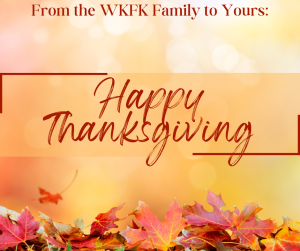 Most American school children know the story of the “first” Thanksgiving: in 1621 at Plymouth, the pilgrims held a feast to celebrate a good harvest with native Americans. (Actually, the first Thanksgiving in the American colonies was celebrated two years earlier in Virginia.) But most people do not know the somewhat complicated story about how Thanksgiving became a federally recognized holiday.
Most American school children know the story of the “first” Thanksgiving: in 1621 at Plymouth, the pilgrims held a feast to celebrate a good harvest with native Americans. (Actually, the first Thanksgiving in the American colonies was celebrated two years earlier in Virginia.) But most people do not know the somewhat complicated story about how Thanksgiving became a federally recognized holiday.
George Washington Proclaims the First Official Thanksgiving
In October of 1789, President Washington proclaimed Thursday November 26 to be a day to offer “sincere and humble thanks” for victory in the Revolutionary War and for “the great degree of tranquility, union, and plenty, which we have since enjoyed.” John Adams twice proclaimed a day of Thanksgiving, but Thomas Jefferson, who was not religious, did not. James Madison proclaimed a day of Thanksgiving following the end of the War of 1812.
Mary Had A Little Lamb and Some Turkey Too
During the first half of the 19th century, Thanksgiving was primarily a regional holiday. It was celebrated throughout New England and the Northeast. States would proclaim the holiday individually. In some states, Thanksgiving was in October, in others it was in January. In the South, Thanksgiving was pretty much unheard of. It became a nationwide celebration largely due to the efforts of Sarah Josepha Hale, who is best known for being the author of the nursery rhyme “Mary Had a Little Lamb.” Beginning in 1846, she campaigned tirelessly to make Thanksgiving a national holiday. She wrote numerous editorials and letters to five different presidents trying to persuade them to make Thanksgiving a holiday. Finally, in 1863 President Lincoln declared a “Day of Thanksgiving and Praise” to be celebrated on the last Thursday of November. Lincoln’s proclamation made Thanksgiving a national tradition.
Franksgiving
By the early 20th century, many of traditions associated with Thanksgiving, pumpkin pie, parades, football games- were common. Thanksgiving was always celebrated on the last Thursday of November. However, in 1939 there were five Thursdays in November. America was still in the midst of the Great Depression. At that time, it was considered inappropriate to advertise for the Christmas shopping before Thanksgiving. At the urging from the head of Macy’s department store, Franklin Roosevelt moved Thanksgiving to the fourth Thursday in November to give stores an extra week of Christmas shopping. This move was hugely unpopular and dubbed “Franksgiving.” Many people celebrated on the last Thursday of November instead. In 1940 and 1941, November had four Thursdays, and FDR proclaimed Thanksgiving on the third Thursday.
In 1941, Congress passed a compromise. Beginning in 1942, Thanksgiving would be the fourth Thursday of November. FDR signed the bill, permanently affixing the date of Thanksgiving as a federal holiday.
